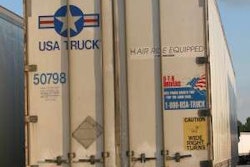Transport Capital Partners’ fourth-quarter Business Expectation Survey shows how carriers are adapting to the pressures of slowing receivables coupled with ongoing demands of equipment payments and truck utilization. TCP — which specializes in mergers and acquisitions, capital sourcing and advisory services — uses the quarterly surveys, as well as conversations with personal contacts, to collect the insights and opinions of the nation’s transportation industry.
“Over 50 percent of carriers responded that their receivables are still increasing,” says Richard Mikes, a managing partner of TCP. “The numbers are about the same as our survey six months ago, with the greatest pressure on large carriers (with over $25 million in revenues). Almost 60 percent reported this trend.”
Lana Batts, a managing partner at TCP, says the number of carriers using brokers has dropped dramatically from two quarters ago, with only 40 percent saying they are using more broker freight, compared to 65 percent in February. “Fifty-nine percent of larger carriers are using less broker freight, while only 49 percent of small carriers are doing so,” Batts says.
Mikes says that overall, carriers are bringing their capacity more in line with demand, but smaller ones have fewer options and therefore appear to be relying more on brokers.
“The cash pressure is reflected in only 80.2 percent of carriers, who report they are current on equipment payments, and an additional 11 percent that have had lenders modify payments,” Batts says. “Six months earlier, 90 percent were current, and 4 percent were current after modifications.” Carriers also report making some adjustments in their type of business, but two-thirds indicate they generally are the same in type of haul, equipment and commodity.
About half as many carriers that were considering leaving the industry in February are considering leaving now. “The bottom line is that one in eight carriers have given serious consideration to leaving the industry if tonnage does not increase in the next six months, with one in 4.5 carriers under $25 million in revenue considering it,” Mikes says. Truckers historically experience cash-tight first quarters with lower freight tonnage and higher operating costs due to weather, coupled with cash for licensing and insurance.










